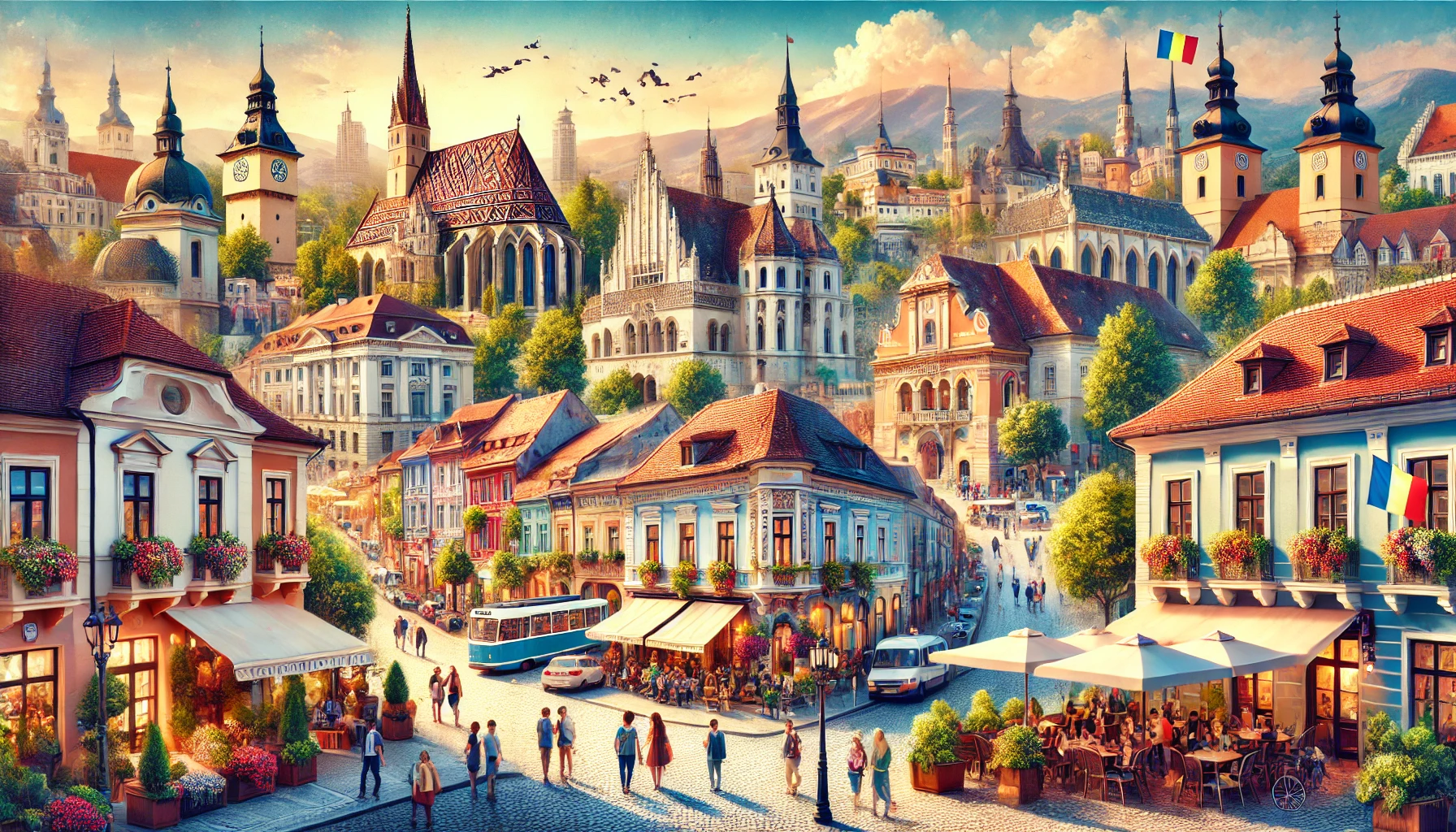
Romania is a country filled with history, culture, and breathtaking landscapes that offer a unique travel experience for anyone willing to explore its wonders. From bustling urban life to serene, historic streets, Romania’s cities provide a mix of modern attractions and ancient traditions. In this article, we will take a closer look at some of the best cities to visit in Romania, showcasing what makes each one a must-see destination for travelers.
Bucharest: The Energetic Capital of Romania
Bucharest, the capital city of Romania, is often referred to as the Paris of the East due to its stunning architecture and lively culture. It’s the largest city in Romania and serves as the country’s cultural, industrial, and financial center.
Bucharest’s Old Town is a great place to start your journey. The area is filled with charming streets, historic buildings, and an array of cafes and restaurants where you can taste traditional Romanian cuisine. Strolling through the Old Town allows visitors to appreciate the mix of Baroque, Renaissance, and modern architectural styles that define the city’s skyline.
One of the city’s most impressive landmarks is the Palace of the Parliament, which is the heaviest building in the world and a symbol of Bucharest’s grandiosity. The palace’s architecture is a testament to Romania’s rich history, and guided tours inside provide insight into its construction and historical significance.
For those interested in the arts, the Romanian Athenaeum is a must-visit. This stunning concert hall is renowned for its exquisite architecture and serves as the home of the George Enescu Philharmonic Orchestra. It stands as a true cultural icon, representing Bucharest’s love for music and performance arts.
Cluj-Napoca: The Heart of Transylvania
Cluj-Napoca, often simply called Cluj, is a vibrant university city located in the heart of Transylvania. It’s known for its youthful atmosphere, thanks to its large student population, and its deep roots in history and culture.
One of the main attractions in Cluj-Napoca is St. Michael’s Church, a Gothic masterpiece that stands as a focal point in the city’s main square, Piața Unirii. This church is one of the oldest and most significant buildings in Transylvania, symbolizing the city’s spiritual and architectural heritage.
Cluj-Napoca is also home to several museums and galleries, including the National Museum of Transylvanian History and the Art Museum, which displays an extensive collection of Romanian and European art. Exploring these sites gives visitors a deeper understanding of Cluj’s role in the region’s cultural development.
Nature enthusiasts will love the Botanical Garden in Cluj, one of the largest in Eastern Europe. It offers a peaceful retreat from the hustle and bustle of the city, with beautiful themed gardens, rare plants, and picturesque walking paths, making it a perfect spot for relaxation.
Sibiu: A Medieval Gem in Romania
Sibiu is a city that truly captures the essence of medieval Romania. It is famous for its well-preserved architecture, cobblestone streets, and vibrant cultural scene. Sibiu has earned its place as one of Europe’s top destinations due to its unique blend of tradition and modernity.
The city’s Main Square, known as Piața Mare, is surrounded by historical buildings and is the heart of many cultural events and festivals throughout the year. This square is a great place to start exploring Sibiu’s charming old town, with its narrow alleyways and hidden courtyards that tell stories of centuries past.
Sibiu is also famous for its fortified churches and medieval towers, such as the Council Tower, which offers panoramic views of the city. Climbing the tower provides a stunning perspective of the city’s red-roofed houses, the surrounding Carpathian Mountains, and the overall beauty of this historical gem.
In addition to its architectural marvels, Sibiu is known for its vibrant arts scene. The city was named the European Capital of Culture in 2007, and its dedication to the arts is evident in its numerous galleries, theaters, and cultural festivals, which continue to draw visitors from all over the world.
Brașov: The Gateway to the Carpathians
Brașov is another fantastic destination in Romania, known for its beautiful mountain scenery and medieval charm. It’s located near the famous Carpathian Mountains and serves as a gateway to many natural and historical attractions in the region.
The city’s most iconic landmark is the Black Church, one of the largest Gothic churches in Eastern Europe. This magnificent structure dominates Brașov’s skyline and is renowned for its impressive organ and stunning collection of Oriental carpets inside.
Brașov’s Council Square (Piața Sfatului) is another must-visit, lined with colorful baroque buildings and bustling with life. The square is a hub of activity, hosting markets, festivals, and open-air performances, providing a glimpse into the local culture and lifestyle.
For those who love the outdoors, Brașov is also a starting point for exploring Mount Tampa. A short hike or a cable car ride will take you to the summit, where you can enjoy breathtaking views of the city and the surrounding landscapes. The trails around Mount Tampa are perfect for nature lovers and adventure seekers looking to experience Romania’s natural beauty.
Romania’s cities are rich in history, culture, and natural beauty, each offering a unique experience to travelers. From the bustling streets of Bucharest to the medieval charm of Sibiu, the youthful vibe of Cluj-Napoca, and the scenic landscapes of Brașov, there is something for every traveler in this incredible country. Exploring these cities not only provides insight into Romania’s past but also reveals the modern and vibrant life that defines its present.








